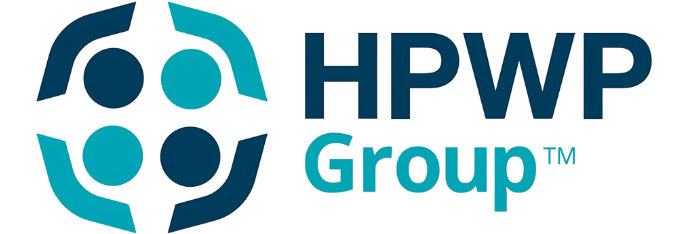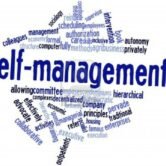In-House Training vs External Coaching: Which Works Best?

In today’s competitive business landscape, organizations must continuously evolve to remain relevant and effective. A key factor that determines success is how well a company develops its people. Training and development programs not only boost employee skills but also build engagement, confidence, and long-term commitment.
However, one question continues to challenge business leaders and HR professionals alike: Should you invest in in-house training or hire external coaching services? Both approaches have their own strengths and challenges, and the answer often depends on an organization’s culture, size, and long-term goals. Let’s explore both methods in detail and help you decide which option will best suit your team.
Understanding In-House Training
In-house training refers to learning programs created and delivered internally within an organization. These programs are usually led by internal HR teams, senior leaders, or department experts who understand the company’s culture, processes, and expectations.
Advantages of In-House Training
- Customization to Company Needs
In-house programs are tailored to the organization’s specific goals, challenges, and performance requirements. Trainers understand company policies, systems, and culture, making learning more relevant and immediately applicable. - Cost Efficiency Over Time
While there might be initial expenses for designing and delivering the program, in-house training becomes more cost-effective for larger teams. The organization can reuse materials and modules across departments without paying external fees. - Cultural Alignment
Since internal trainers are already immersed in the company culture, they can reinforce desired values and behaviors more effectively. This ensures that employees receive consistent messaging aligned with the company’s mission and goals. - Confidentiality
Employees may feel more comfortable discussing company-specific issues and internal challenges when training is handled in-house, as there’s no external party involved.
Challenges of In-House Training
- Limited Expertise: Internal trainers might lack the latest industry insights or advanced techniques that external experts bring.
- Resource Constraints: Creating and managing a training program internally can be time-consuming and may stretch existing HR teams.
- Complacency Risk: Without exposure to new perspectives, in-house training can become repetitive and outdated over time.
Understanding External Coaching
External coaching involves hiring specialized professionals or organizations to deliver training and development sessions. These coaches bring outside experience, proven methodologies, and objective perspectives to help employees and leaders reach higher levels of performance.
Advantages of External Coaching
- Expertise and Objectivity
External coaches bring a wealth of experience across industries. They offer new insights, unbiased feedback, and innovative problem-solving approaches that internal teams may not consider. - Leadership Development
External coaching is particularly effective for senior leaders and executives. Coaches can challenge them to think differently, enhance communication skills, and develop emotional intelligence. - Fresh Perspectives and Best Practices
Because they work with multiple clients, external coaches bring exposure to new tools, frameworks, and global best practices that can elevate company performance. - Improved Accountability
Employees often take external coaches more seriously due to their neutrality and authority. This often leads to higher engagement and commitment to the coaching process.
Challenges of External Coaching
- Higher Costs: Hiring professional coaches or consulting firms can be expensive, especially for small or mid-sized businesses.
- Limited Cultural Familiarity: External coaches may need time to understand your company’s unique culture and dynamics.
- Short-Term Focus: Without proper integration, coaching sessions can become isolated events without long-term reinforcement.
When to Choose In-House Training
In-house training works best when:
- You want to strengthen company culture and reinforce specific values.
- Your team requires consistent onboarding or compliance-related training.
- You have skilled leaders or HR professionals capable of designing effective programs.
- You’re looking for cost efficiency over time for large groups of employees.
Examples include employee onboarding, software training, safety programs, and compliance workshops. These areas benefit from in-house delivery because they are specific to internal systems and standards.
When to Choose External Coaching
External coaching is ideal when:
- You need leadership development for executives or high-potential employees.
- Your organization is undergoing major organizational change management or cultural transformation.
- You’re looking to implement advanced skills such as strategic thinking, innovation, or emotional intelligence.
- Internal expertise is limited, or you want to bring a new perspective to performance issues.
External coaching aligns perfectly with organizational development consulting and can support broader organizational development training programs. It ensures that leaders and teams not only learn new skills but also apply them effectively to drive results.
Combining Both: The Hybrid Approach
Many successful organizations today don’t choose one over the other—they blend both in-house training and external coaching for maximum impact. This hybrid model ensures internal alignment while gaining access to external innovation.
For example, a company might conduct internal onboarding and technical training in-house, while hiring external coaches for leadership and team development. This balance helps maintain cost efficiency while ensuring employees gain exposure to new ideas and practices.
Creating a Sustainable Learning Culture
Whether you choose in-house training or external coaching, the ultimate goal should be to build a continuous learning culture. Employees thrive when they have access to consistent growth opportunities, clear career paths, and supportive leadership.
Organizations that integrate organizational development programs and align them with employee engagement and retention strategies tend to outperform those that view training as a one-time investment. By combining structure, feedback, and flexibility, companies can foster innovation, collaboration, and long-term commitment.
Final Thoughts
The choice between in-house training and external coaching isn’t about which is better—it’s about what’s best for your organization right now.
If your team needs tailored, cost-effective solutions that align with company goals, in-house training may be the answer. But if you’re looking for expertise, innovation, and leadership transformation, external coaching will deliver the best results.
Ultimately, the most successful companies know when to blend both strategies, using each where it adds the most value. By doing so, you can empower your employees, strengthen performance, and build a resilient, future-ready workforce.










